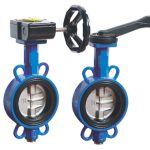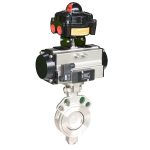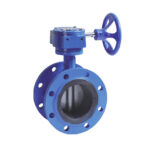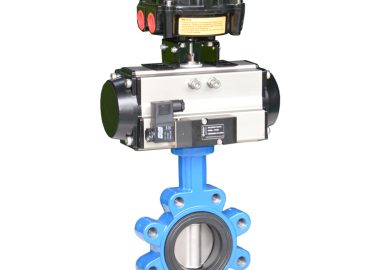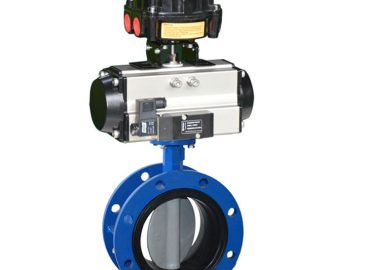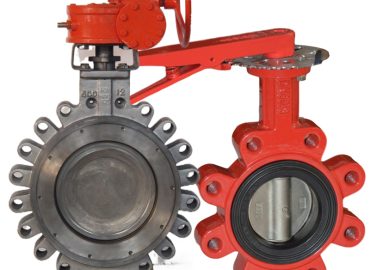Butterfly valves are popular in many industrial applications for regulating the flow of various fluids. One crucial component of a butterfly valve is the end connection, which ultimately determines how the valve can be installed and connected to pipeline systems. The end connection type of a butterfly valve can affect its performance, efficiency, and longevity over its lifespan. In this blog post, we will explore the most common types of butterfly valve end connections used in industries, outlining their advantages, disadvantages, common applications, and examples. By understanding the different types of butterfly valve end connections, we can better determine which type is suitable for specific industrial applications.
Introduction butterfly valve end connection types
It is difficult to determine the most common type of wafer butterfly valve end connection used in industries since each application differs in its specific requirements. However, flanged connection is perhaps the most widely used end connection type in many industries due to its versatility and ease of installation. Flanged connections involve bolting the valve between two flanges, which are then bolted to the piping system. Flanged connections are designed to fit industry-standard flange dimensions, making them adaptable to a variety of pipes and valves. Flanged connections are primarily used where high-pressure applications require valve removal and maintenance, allowing for maintenance and replacement without the need to remove the entire piping system. The flanged-connected butterfly valve provides a tight seal and a secure connection, ensuring minimal system downtime, making it a popular choice in many industrial applications.
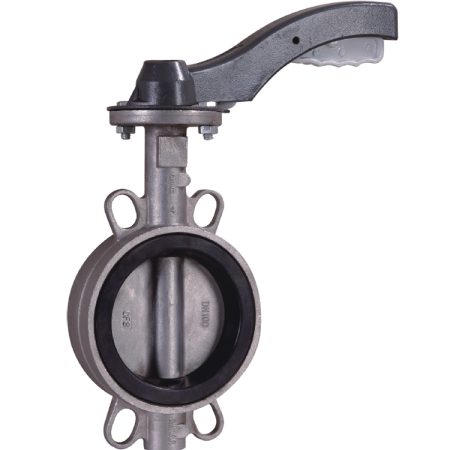
Explanation of butterfly valves in general
Butterfly valves are flow control devices that regulate the flow of various fluids in various applications. They are primarily used to throttle the flow of fluids and control the pressure, ensuring optimal fluid flow. Butterfly valves have a flat, disk-shaped closing mechanism mounted on a rod that rotates 90 degrees to open or close the valve. When the valve is open, fluid flows freely in the pipeline, and when the valve is closed, it seals the pipeline, preventing fluid from flowing. Butterfly valves operate efficiently, require minimal maintenance, and have a smaller profile than other valve types, making them ideal for space-limited applications. In summary, butterfly valves are essential flow control devices, used to regulate the flow of fluids in various industrial applications, requiring minimal maintenance and having a smaller form factor than other valves.
The importance of the right end connection
The end connection is a crucial factor in selecting and using butterfly valves. It defines how the valve can be installed and connected to the piping system. The wrong end connection type can result in leakage, inefficiency, and reduced lifespan of the pneumatic valve, all leading to system downtime and repair costs. It is essential to choose the right end connection that fits your specific application, ensuring optimal performance, longevity, and minimal maintenance. Selecting the right end connection type for a butterfly valve is a critical decision that requires careful consideration of the system requirements, industry regulations, and valve type. Investing time in researching and selecting the correct end connection type will ensure that the butterfly valve operates efficiently and effectively within the pipeline system, minimizing the risk of unplanned downtime and reducing maintenance costs.
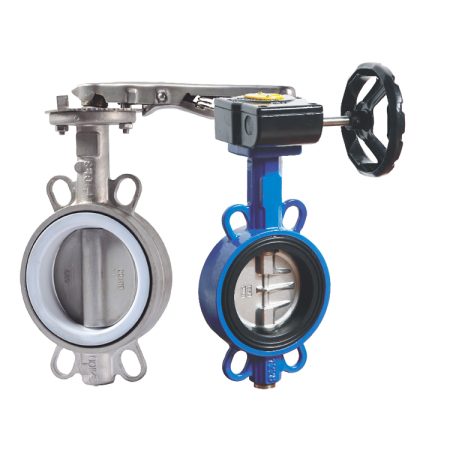
Brief overview of the most common end connection in the industry
There are several types of end connections available in the industry for lug butterfly valve, and their use varies depending on the specific application. One of the most common end connections is the flanged connection, which involves bolting the valve between two flanges, which are then bolted to the piping system. It is versatile and easy to install, fitting standard flange dimensions in various pipes and valves. Another common end connection is the lug connection, featuring threaded holes or bolts along the valve’s perimeter, and used for easy installation or removal. Wafer connection, a simpler and lighter form of flanged connection, is another popular type, sandwiching the valve between two flanges without bolts or nuts on the valve body. Grooved connection features grooves on the valve body that align with rubber couplings, making it more cost-effective for pipe systems and easy to install. Lastly, threaded connection uses threaded valve ends to connect two pipeline ends, making it ideal for low-pressure applications or smaller piping sizes.
Types of End Connections
There are several types of end connections available for flanged butterfly valve, and their use depends upon the specific application requirements. The most common end connection types are flanged connection, lug connection, wafer connection, grooved connection, and threaded connection. Flanged connection is versatile and easy to install, fitting standard flange dimensions in various pipes and valves. It is commonly used in high-pressure applications that require valve removal and maintenance. Lug connection features threaded holes or bolts along the valve’s perimeter, and it is used for easy installation or removal. Wafer connection is a simpler and lighter form of flanged connection that sandwiches the valve between two flanges without bolts or nuts on the valve body, making it cost-effective for pipe systems. Grooved connection features grooves on the valve body that align with rubber couplings, making it more cost-effective for pipe systems and easy to install. Lastly, threaded connection uses threaded valve ends to connect two pipeline ends, making it ideal for low-pressure applications or smaller piping sizes.
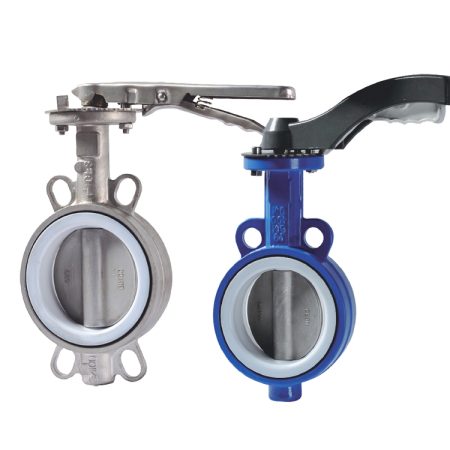
Wafer End Connection
The wafer end connection is perhaps the simplest and most economical connection type used for pneumatic butterfly valve. The wafer connection features two valve body halves that are sandwiched between two flanges using bolts and nuts, which effectively clamp the valve between the flanges without requiring additional hardware. The wafer connection’s design facilitates the efficient installation of butterfly valves in pipelines requiring rapid installation and disconnection, making it a popular choice in many applications. Another advantage of the wafer connection is that it requires less space than other connection types, allowing it to be used in compact applications. However, one disadvantage of the wafer connection is that it cannot provide a bi-directional shutoff, resulting in the possibility of backflow or leakage. Overall, the wafer end connection provides a cost-effective and space-saving solution, making it a common choice in many applications.
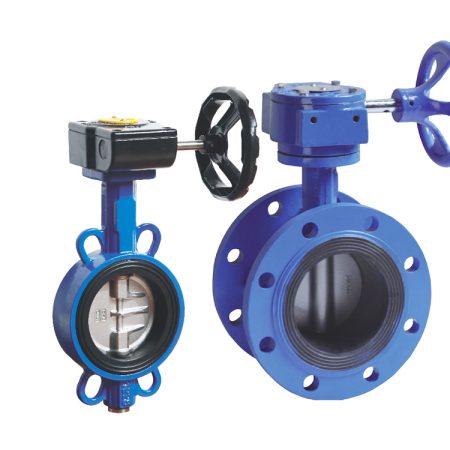
Lug End Connection
The lug end connection featured on butterfly valves involves threaded inserts on the valve’s perimeter, which enables easy installation or removal. The lug is effectively clamped between two flanges or pipe ends using bolts and nuts, creating a secure and stable connection that promotes an efficient flow of fluids. The lug connection’s primary advantage is that it provides bi-directional shutoff, as the valve can prevent backflow in both directions. This connection type is commonly used in applications that require a more secure connection than the wafer connection type, where a complete removal of the valve is necessary for replacement or maintenance. However, one disadvantage of the lug connection is that additional space is required to install the bolts, and they require more time to install and remove than wafer connections.
Flanged End Connection
Flanged end connection involves bolting the valve between two flanges, which is then bolted to the piping system. This connection type is versatile and easy to install, fitting standard flange dimensions in various pipes and valves. Moreover, there are several types of flanged connections available, allowing users to customize the connection type to meet their application requirements. Flanged connection is primarily used in high-pressure applications that require valve removal and maintenance, allowing for closure and isolation of the valve without affecting the entire piping system. It also provides a tight seal and secure connection, ensuring minimal system downtime. However, one disadvantage is that it requires a larger footprint than other connection types, making it less suitable for space-limited applications. Overall, the flanged end connection is a popular and reliable option for industrial applications, offering a variety of benefits and versatility.
Most Common End Connection in the Industry
Flanged connection is arguably the most common end connection type used in many industries, including manufacturing, oil and gas, and water treatment. Its versatility and ease of installation make it a favorite among users. The flanged connection involves bolting the valve between two flanges, which are then bolted to the piping system. This connection type is compatible with industry-standard flange dimensions, making it adaptable to a variety of pipes and valves. Moreover, flanged connections are widely used in high-pressure applications that require valve removal and maintenance, enabling maintenance and replacement without the need to remove the entire piping system. The flanged-connected butterfly valve provides a secure connection and a tight seal, ensuring minimal system downtime and making it a preferred choice in many industrial applications. Overall, the flanged end connection is one of the most reliable, convenient, and widely used end connection types in the industry.
Wafer vs Lug vs Flanged End Connection
Wafer, lug, and flanged end connections are three of the most commonly used end connection types for butterfly valves. A wafer connection involves two valve body halves that are sandwiched between two flanges using bolts and nuts, clamping the valve between the flanges without requiring additional hardware. This connection type is economical, compact, and requires less space, but it cannot provide bi-directional shutoff, resulting in the possibility of backflow or leakage. On the other hand, the lug connection involves threaded inserts on the valve’s perimeter, effectively clamped between two flanges or pipe ends using bolts and nuts. It provides bi-directional shutoff and is commonly used when complete removal or replacement of the valve is necessary.
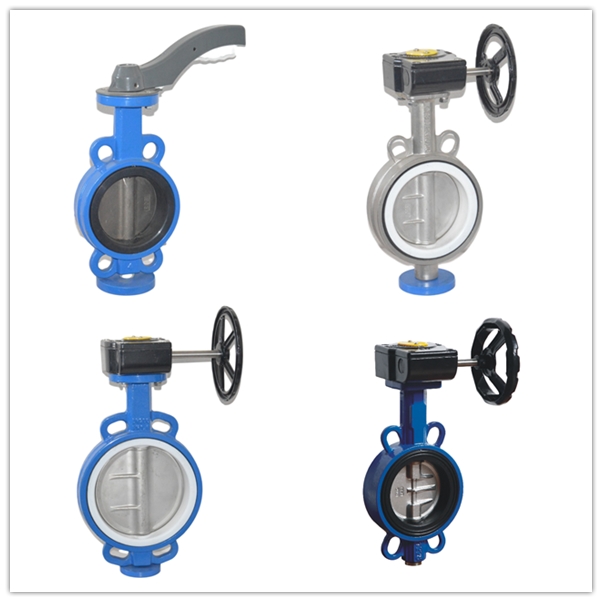
However, this connection type requires additional space and time to install and remove. Lastly, the flanged connection involves bolting the valve between two flanges, which are then bolted to the piping system. It is considered one of the most versatile, reliable, and widely used connection types in many industries. It enables maintenance and replacement without the need to remove the entire piping system, making it ideal for high-pressure applications. However, it requires a larger footprint than other connection types, making it less suitable for space-limited applications. In summary, each end connection type has its advantages and disadvantages, and selecting the most appropriate type requires careful consideration of the specific application’s requirements.
Advantages of Wafer End Connection in the industry
The wafer end connection for butterfly valves has several advantages that make it ideal for many industries. One of its primary advantages is its low cost compared to other connection types. As it doesn’t require additional hardware, it’s an economical choice for applications that require numerous valves. Another advantage of the wafer end connection is its ease of installation, which results in less labor time and costs. This connection type is also compact, saving space in pipes and reducing the overall weight of the system. Additionally, the wafer end connection’s design allows for quick installation and removal, making it suitable for applications with a higher volume of flow and frequent valve replacement needs. When used correctly, this connection type provides a tight seal, minimizing the risk of leakage and system downtime. Overall, the wafer end connection for butterfly valves is an efficient, cost-effective, and popular choice in numerous industry applications.
Industries where Wafer End Connection is most common
The wafer end connection for butterfly valves is commonly used in industries where cost-effectiveness and ease of installation are priorities. These industries include HVAC, water treatment, chemical processing, and food and beverage production. In HVAC applications, wafer butterfly valves are integrated into heating and cooling systems, regulating fluid flow to maintain optimal temperature control. Water treatment facilities use butterfly valves with wafer connections in their pipelines to manage water treatment processes. The chemical processing and food and beverage industries rely on wafer butterfly valves for efficient flow control in their production processes. Overall, the wafer end connection for butterfly valves is a versatile and cost-effective option suitable for a wide range of industrial applications.
Examples of Wafer End Connections in Use
Wafer end connections are widely used in various applications to facilitate fluid flow control. Some common examples of wafer end connections in use include HVAC systems, where they regulate fluid flow in heating and cooling applications. Water treatment plants often utilize butterfly valves with wafer connections for managing water treatment processes. The food and beverage industry also relies on wafer butterfly valves for efficient flow control during production processes. In the chemical processing industry, butterfly valves with wafer connections are used in pipelines for handling various chemical and process fluids. Lastly, wafer end connections are used in pneumatic conveying systems in the transportation of materials such as grain, flour, and plastic pellets.
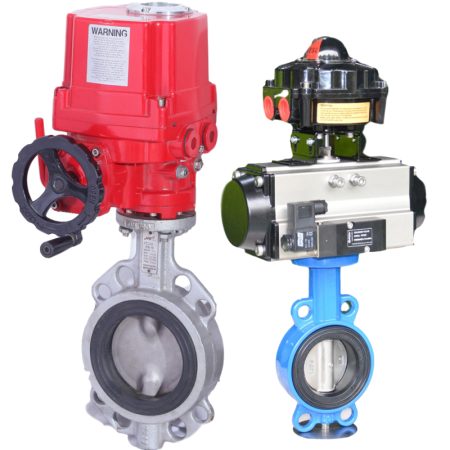
Conclusion
In conclusion, the most common type of butterfly valve end connection used in various industries is the flanged end connection. Its adaptability, versatility, and ease of installation make it suitable for applications that require high-pressure isolation, maintenance, and replacement. Flanged end connections have industry-standard dimensions that are compatible with various pipes and valves, making it a popular choice for many industrial applications. Moreover, it provides a tight seal, ensuring minimal system downtime and promoting efficient fluid flow management. Despite requiring a larger footprint than other connection types, the flanged end connection is widely used in manufacturing, oil and gas, water treatment, and other industries. However, for applications where cost-effectiveness, space-saving, and quick installation and removal are high priorities, wafer end connections are a commonly used and suitable option. Ultimately, selecting the appropriate butterfly valve end connection type requires careful consideration of the specific application’s requirements to ensure optimal fluid management, control, and efficiency.
Recap of the importance of end connections in butterfly valve
End connections in butterfly valves are crucial for proper fluid management, control, and efficiency. The type of end connection used depends on the specific application’s requirements, including the system’s pressure rating, valve maintenance needs, space limitations, and installation frequency. A suitable end connection should provide a tight seal, bi-directional shutoff, and efficient flow control while ensuring minimal system downtime during maintenance and replacement. Different end connections have unique advantages and disadvantages, and selecting the appropriate end connection type requires careful consideration of the application’s requirements. Proper selection and installation of butterfly valve end connections ensure optimal system performance, increased lifespan, and reduced costs, making them a vital component in various industrial applications.
Why Wafer End Connection is the most common in the Industry
The wafer end connection is one of the most common end connection types for butterfly valves in many industries. Its popularity can be attributed to several factors. Firstly, the wafer connection is incredibly cost-effective compared to other connection types, making it an economical choice for applications that require numerous valves. Secondly, its ease of installation saves labor time and costs while providing rapid installation and removal. Thirdly, the wafer connection is compact, making it suitable for applications where space is limited. Finally, its design allows for quick installation and removal, making it a preferred choice in applications that require frequent valve replacement. When used properly, the wafer end connection provides a tight seal, minimizing the risk of leakage and downtime. Overall, the wafer end connection is a widely used, cost-effective, efficient, and reliable choice that meets many industrial applications’ requirements.
Final Thoughts
In conclusion, the selection of the appropriate end connection type for butterfly valves is critical for efficient fluid management, control, and system performance. Flanged, wafer, and lug connections are the most commonly used end connection types, each with its advantages and disadvantages. Flanged connections are the most versatile and reliable; wafer connections are the most cost-effective and easy to install, while lug connections provide bi-directional shutoff and are suitable for applications that require complete valve removal. Proper selection and installation of butterfly valve end connections ensure optimal system performance, increased system lifespan, and reduced operating expenses. Understanding the specific application requirements is essential to choose the most appropriate end connection type. Overall, butterfly valves’ end connections are a vital component that should be carefully evaluated to avoid costly maintenance and system downtime.


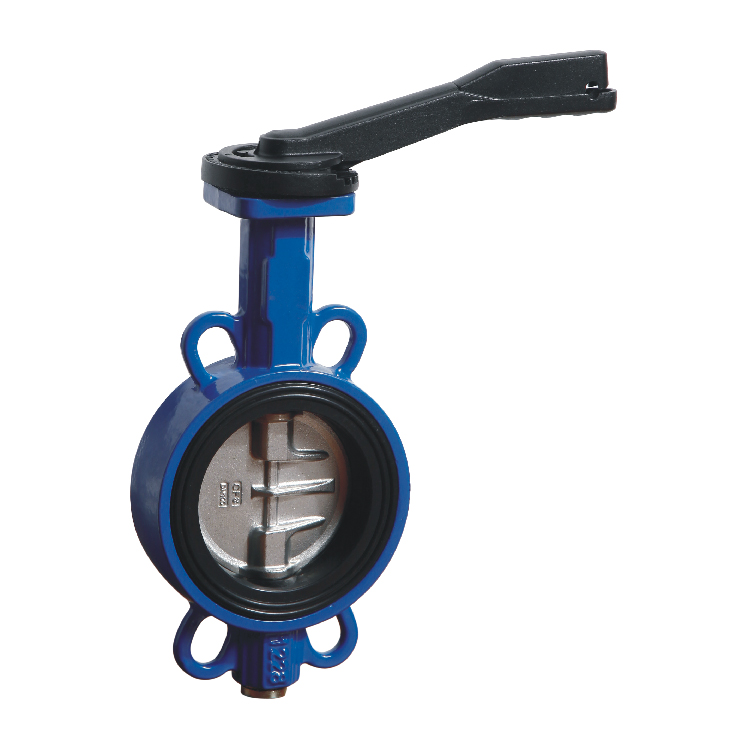
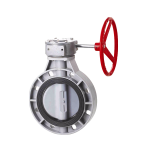
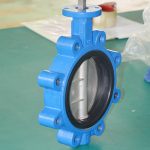
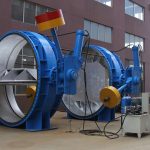
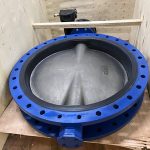
-150x150.jpg)
